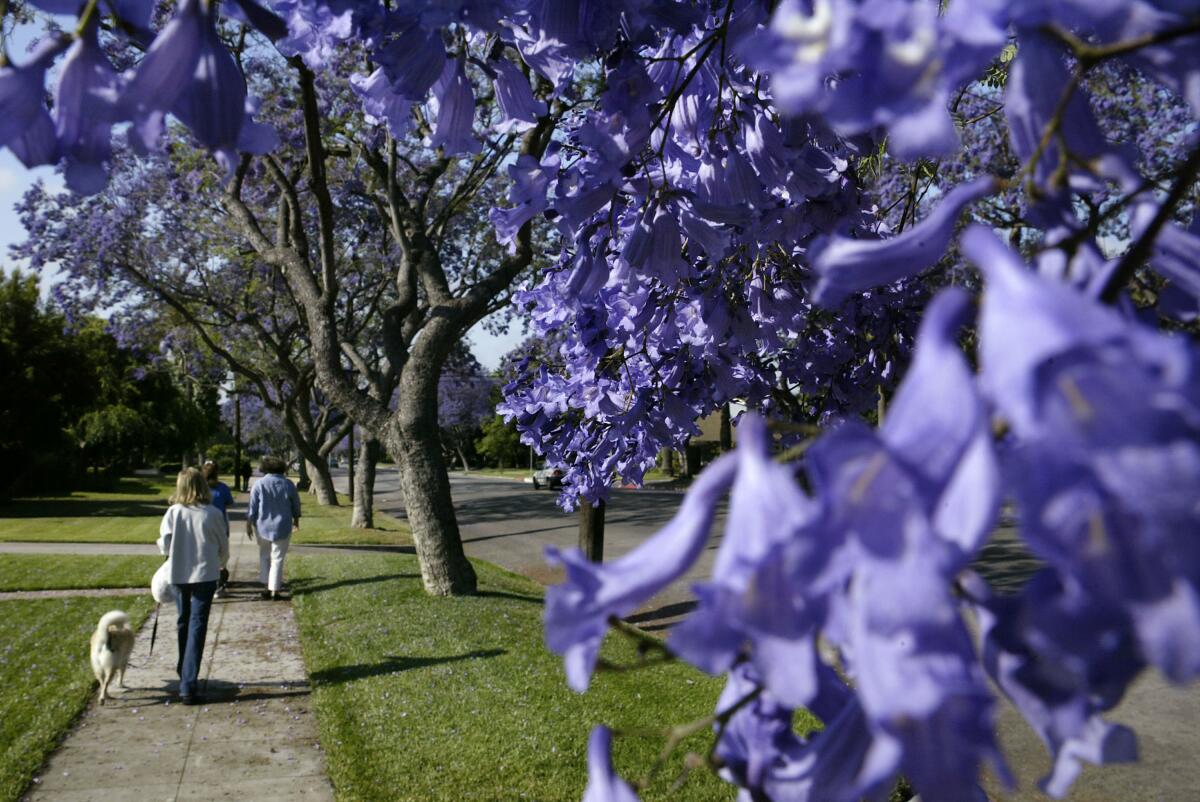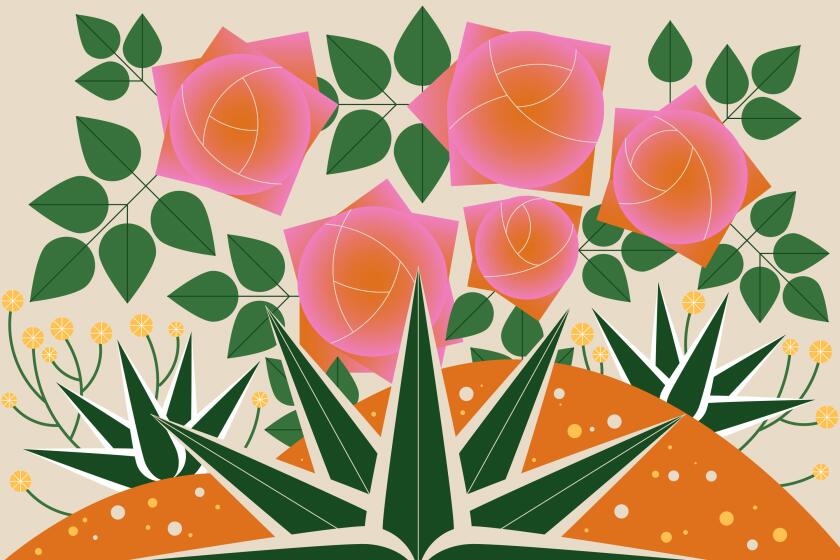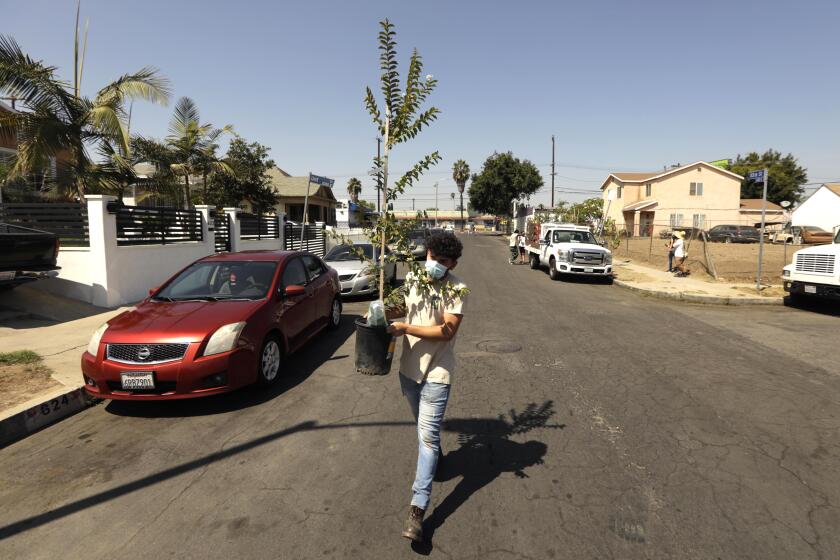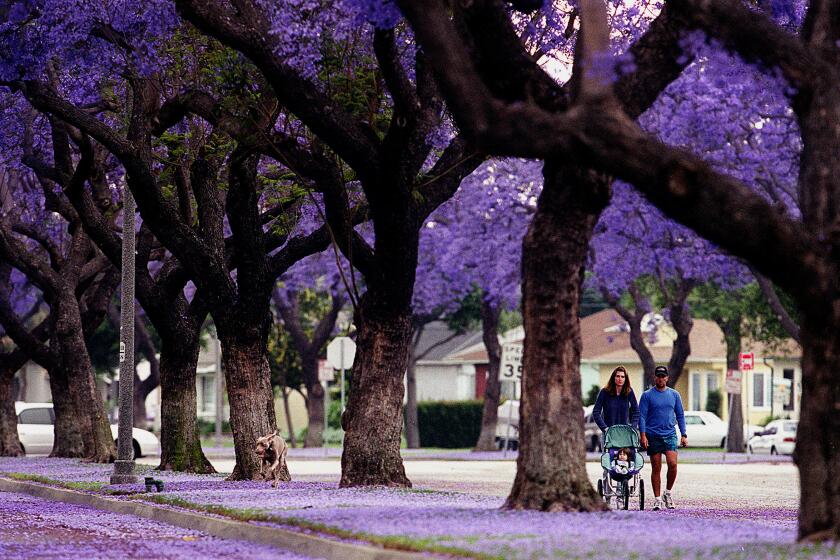Opinion: Here’s what’s wrong with your perfectly drought-tolerant Southern California landscaping

- Share via
Prevailing notions of responsible landscaping and gardening in California have long focused on a single metric: water use. By ignoring the importance of native plants, this formula disastrously undermines biodiversity.
Most of California lies within one of just five temperate biodiversity hot spots on Earth and the only one in North America. We have an undeniable responsibility to the valuable array of species with which we share our state. But for more than a century, we have filled our communities with nonnative plants that are not part of the natural ecosystem.
We must stop thinking of urban landscapes as purely ornamental and acknowledge the necessity that they serve as lifeboats for California’s natural biodiversity, helping to preserve the species we have imperiled. California has experienced startling declines in its populations of native bees, butterflies, moths, songbirds and other pollinators in recent decades due to habitat loss.
Non-native plants from Mediterranean climates like Australia are getting love from even wholesale California native plant growers for drought-tolerant landscapes in SoCal.
With the additional pressures of climate change, we could lose 50% of all species by the end of the century. Our fire seasons have gone from a few months to a year-round threat in a generation, endangering life that is essential to the health of our ecosystems.
No one should be so confused as to believe that exotic plants from far-flung corners of the globe can be “just as good” as native plants. In fact, there is no scientifically convincing argument to plant any nonnative species for ornamental landscaping. Bring in a tree from another part of the world, and you are planting an island of sterility that won’t help our natural, interconnected flora and fauna adapt to climate change.
Only native species can support existing ecosystems. Nearly all plant-eating insects rely exclusively on native plant species for their life cycle. Though some pollinators will use the blooms of nonnative plants as a food source, native pollinators generally rely on native plants to host their caterpillars and other forms of offspring.
LA’s focus on quantity over quality has bogged down various goals to increase tree planting and canopy cover. That has to change. Shade is not just a nice-to-have amenity in a rapidly warming world.
Moreover, exotic plants often promote the proliferation of invasive insects such as the European honeybee, which drive out native bees and other threatened species. Having already lost over 90% of our native pollinators, we need to take advantage of our limited urban green spaces by planting the best plants for the ecosystem: native ones.
One justification for exotic species promoted within the landscaping industry springs from a fundamental misunderstanding of biodiversity. Many growers and landscapers have been incorrectly taught that the number of species planted is what’s essential.
In fact, while having a diverse palette of plants does help prevent the spread of disease, boosting diversity with nonnative species is counterproductive. Because exotic plants don’t support local soil chemistry and microbes, native insects, birds and mammals, or any of the other life that co-evolved with our native plants over millions of years, every nonnative plant added to a landscape effectively reduces its biodiversity value. At a time when we face critical species loss, we can’t afford to make such choices.
The dream ended once the blossoms began to drop. One petal became four, and then it became a mess.
The good news is that we don’t have to. With nearly 7,000 native plants in the biodiverse zone known as the California Floristic Province, many of which have been introduced into horticulture, landscapers have a wealth of options for every purpose.
Unfortunately, much of this is lost on the commercial landscaping industry. At a recent trade show covered by The Times, many growers promoted “California-friendly” nonnative plants as abundant and appealing options for designers. The L.A. Department of Water and Power’s lawn removal rebate program has also embraced this marketing term.
However, no established scientific metrics exist to determine that a foreign plant is “friendly” to California. Even if an exotic plant has water needs that are similar to those of our native plants, that doesn’t make it friendly to our state or part of its web of life.
The public sector is arguably even worse on this score than private industry. Less than 3% of Los Angeles’ street trees are native, and the city continues to plant nonnative trees almost exclusively. Despite expert and community feedback to the contrary, most city staff members and their professional organizations resist change.
Municipal forestry groups such as California ReLeaf and the California Urban Forests Council wrongly downplay the importance of native plants to politicians, city employees, nursery owners, landscapers and those advocating native species. They fought legislation that would have set very modest targets for native planting. The California Native Plant Society, a bevy of environmental organizations and every scientist with a whiff of biodiversity credibility supported the measure, Assembly Bill 1573, but it was defeated by those who propagate, sell and habitually plant nonnative species.
They prefer the familiar — the same handful of nonnative species that have been grown and planted in California for decades — claiming, for instance, that hardly any native tree species exist. And yet the Los Angeles Community Forest Advisory Committee recently produced a list of 87 native species appropriate for use as street trees in the city.
The idea that human beings know better than millions of years of evolution is the height of hubris. Next spring, when you see the lovely purple flowers on the nonnative jacaranda trees planted all over L.A., stop to notice that not a single butterfly is pollinating them. It’s time for city leaders, the landscaping industry and home gardeners alike to recognize that we live in a vital native ecosystem that we must support.
Charles Miller is the chair of the Los Angeles chapter of the Climate Reality Project and its Biodiversity Committee.
More to Read
A cure for the common opinion
Get thought-provoking perspectives with our weekly newsletter.
You may occasionally receive promotional content from the Los Angeles Times.













